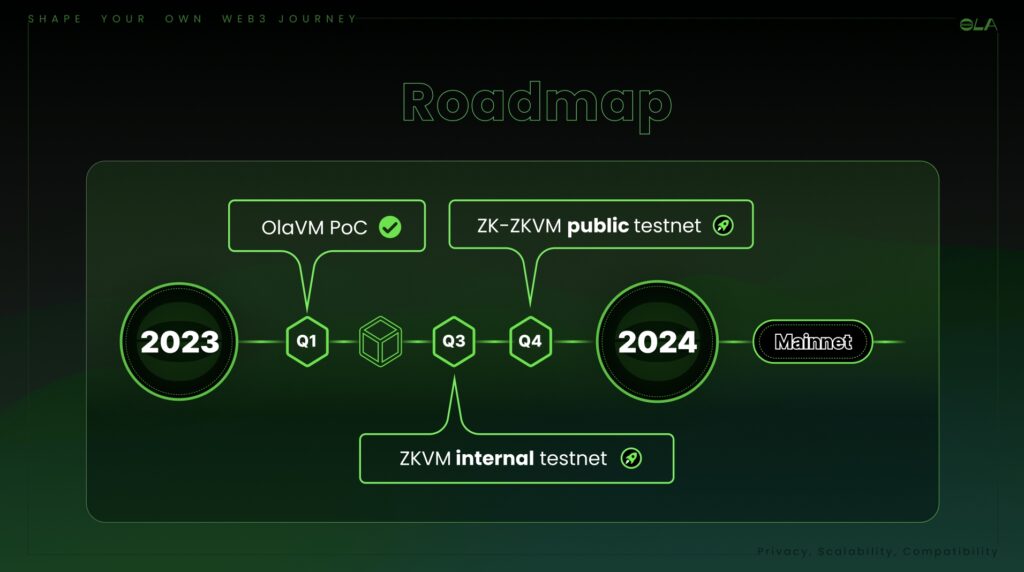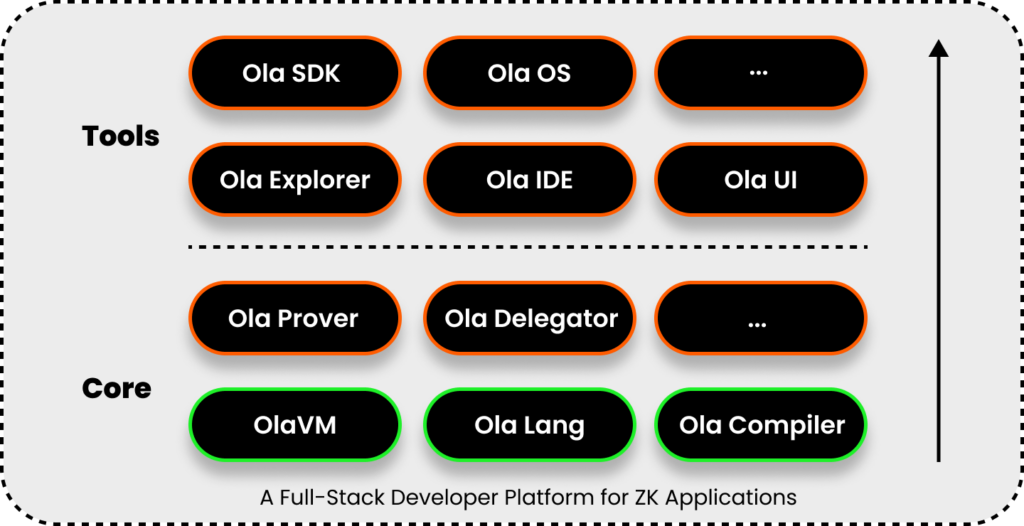Ola plans to launch an internal testnet in the third quarter and a public testnet before the end of 2023.
The prevalence and development of the internet has led to widespread digitalization, threatening the traditional lifestyles of many people with revolutionary changes in economic and social organization. One manifestation of this threat is the monopoly and free use of ordinary people’s data by capital forces, which amplifies the sense of insignificance of individuals and their data, making most people unaware of the value their data creates.
The emergence of blockchain has sounded the trumpet for the data battle. More and more people are realizing that where there is data, there is value, and data created in a decentralized manner on the blockchain can largely eliminate the monopoly of data use. However, the transparency of blockchain data allows anyone to view users’ transactions and on-chain activity records. For users, the key to truly controlling their own data lies in “privacy” technology, which allows them to review their own data.
Currently, an increasing number of laws and regulations are being implemented to regulate the use of data to protect user privacy, forcing many industry giants to focus on privacy and data protection. The combination of blockchain technology and privacy protection functions may be a major trend in future development and can promote the large-scale adoption of Web3.
Programmable Protocol Ola
In this context, public chains and protocols with privacy concepts have a broad prospect. The recent emerging star on the privacy track, Ola, completed a seed round fundraising of 3 million USD at the beginning of July, led by Web3.com Ventures and Foresight Ventures, with participation from Token Metrics Ventures, J17 Capital, Skyland Ventures, LD Capital, CatcherVC and several other prominent investors who recognize the transformative potential of Ola’s vision.
Ola defines itself as a high-performance ZK-ZKVM (hybrid rollup), featuring programmable privacy, programmable scalability, and better developer compatibility. The ZKVM referred to here is a system that uses ZK technology to implement a verifiable circuit system. The ZK-ZKVM system used by Ola resolves the privacy issues present in ZKVM, allowing users to conduct transactions on a public blockchain while ensuring their sensitive information is secure and private. Moreover, Ola provides developers with an optional privacy design choice through its ZK-ZKVM platform. DApp developers can develop private or public transaction features in the application as needed.
In simple terms, Ola is building a Layer2 infrastructure that integrates optional privacy and programmability. It can extend corresponding functions for platforms that lack privacy and high performance, without sacrificing the programmability of the public chain, while inheriting its network security. Developers only need to deploy the corresponding verification contracts on the corresponding chain.
Ola’s Current Progress and Future Plans
Tracing back its origins, Ola was incubated by Sin7y Labs in 2022, originally named OlaVM, and later renamed as Ola. The Sin7y Labs was established in 2021, dedicated to research in the fields of ZK cryptography, ZK algorithms, etc. Its R&D department consists of more than ten cryptography engineering researchers who graduated from prestigious universities, and it has produced over fifty research articles in both Chinese and English.
Besides financing, the significant project progress that Ola has currently completed includes the concept verification (PoC) implementation of the programmability of its ZK-friendly virtual machine OlaVM and its smart contract language Ola-Lang. The next steps include launching an internal test network in the third quarter and releasing a public test network by the end of 2023.

Ola’s Framework
As mentioned earlier, Ola was renamed from OlaVM, and the renaming signifies its evolution in the development process. Ola is a development framework for full-stack developers of zero-knowledge applications, while the zk-friendly virtual machine Ola-VM is a part of it. The other two parts implemented include the smart contract language Ola-Lang and the compiler Ola-Compiler:
Ola-VM: This is a zk-friendly virtual machine. The virtual machine uses a simplified instruction set and precompiled contracts to support complex calculations. In other words, the results of complex calculations are first computed locally by others (usually the prover themselves), without any restrictions. Then, the VM checks the validity of the calculation results.
Ola-Lang: This is a programming language for developing smart contracts for OlaVM. It is Turing complete and can be used to write arithmetic programs. Its syntax is close to C/C++ and Rust, making it easier for most developers to get started, and it is zk-friendly in design. Ola-Compiler: The compiler can compile Ola contract code into assembly code supported by OlaVM.

Besides these three core sectors, the tools and modules listed in the yellow box in the above image are modules that Ola will implement in the future.
OVP Incentive Policy
In March 2023, Ola initiated a community loyalty program called OVP, an acronym for “Ola-vm Points”, originally named “Ola Points”. This program is designed to incentivize and reward active contributors within the Ola community, with the amount of OVP earned directly correlated to the level of contribution made by a member.
There are two methods for community members to earn OVP: The first is by completing Ola-related tasks on the Web3 task platform, Zealy. The second method involves translating Ola content and making valuable suggestions in Ola’s Discord community. Holding a certain number of Ola points will enable users to play a role in the governance of the Ola community in the future, and earn corresponding airdrop rewards. The program continues to evolve and will be further refined over time.
Ola’s Compliance Design
Since the US Treasury Department sanctioned Tornado Cash, blockchain privacy-related regulatory risks have become a hot topic in the industry. The privacy technologies and transactions used by most projects involve regulatory compliance issues. Ola believes that privacy is an urgently needed technology in the current blockchain world and even in the real world, but the expansion of privacy technology must be regulated, and if necessary, private transaction information should be provided to track private asset transfers.
Different from Tornado Cash’s complete privacy, Ola allows transaction information to be audited and tracked when necessary, adopting a ‘view key’ design. Users can disclose executed private transactions through the ‘view key.’ This measure is not only friendly to developers and ordinary users, but also complies with regulatory requirements.
Conclusion
Ola provides privacy and scalability services for all programmable public chains, supplementing performance and privacy without compromising the existing security of public chains. Additionally, from the perspective of community development potential, Ola is positioning itself globally and actively promoting the construction of a global community. The project is making advances in English, French, Korean, Vietnamese, Chinese, Persian, and other communities, and is also carrying out an Ola Global Ambassador recruitment plan. However, as a project that has not yet launched a testnet, whether Ola can achieve more breakthroughs and successes in the field of programmable privacy still requires further practical testing and verification.



